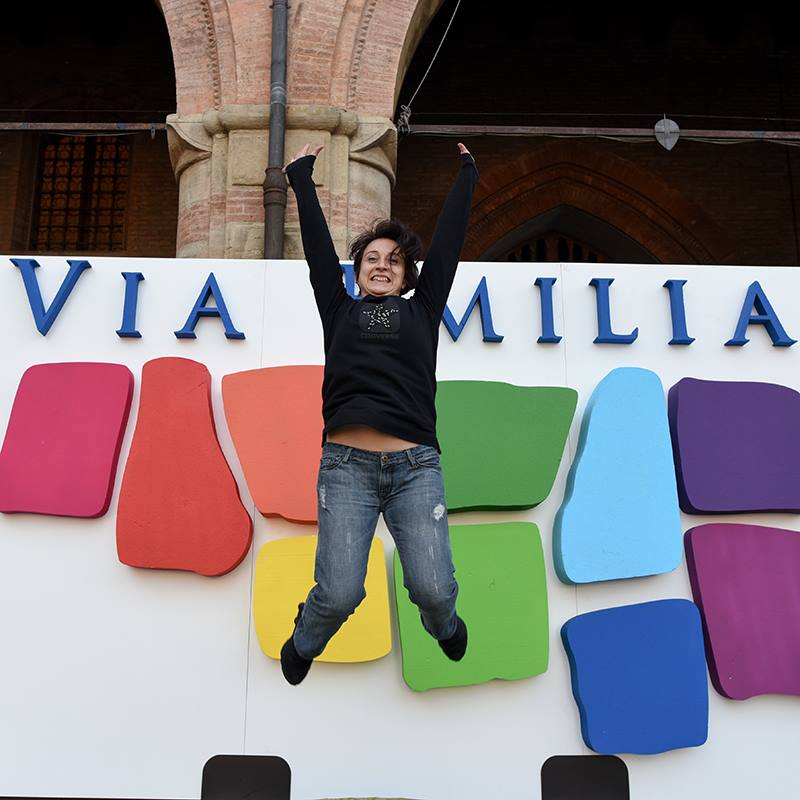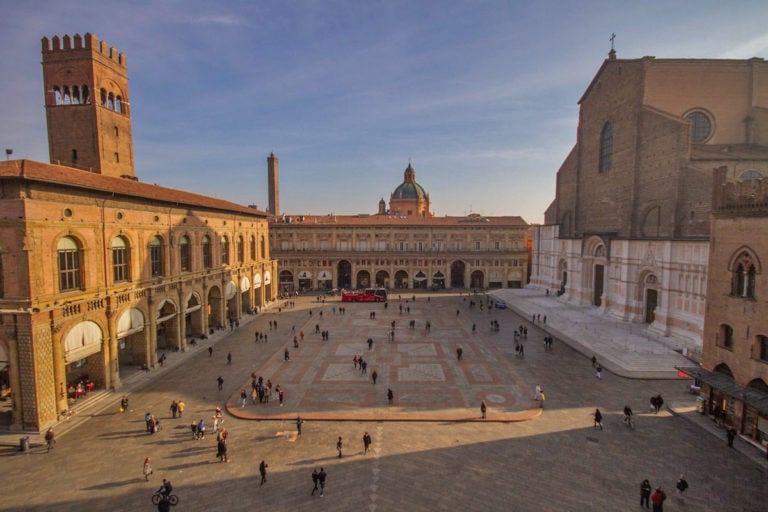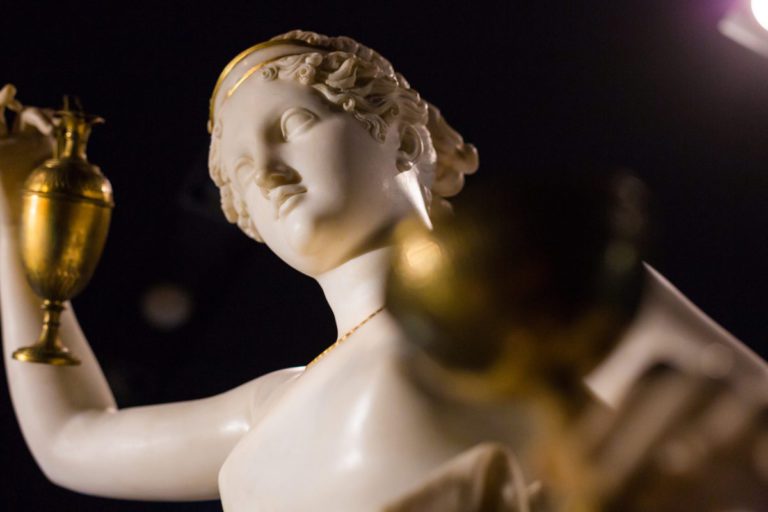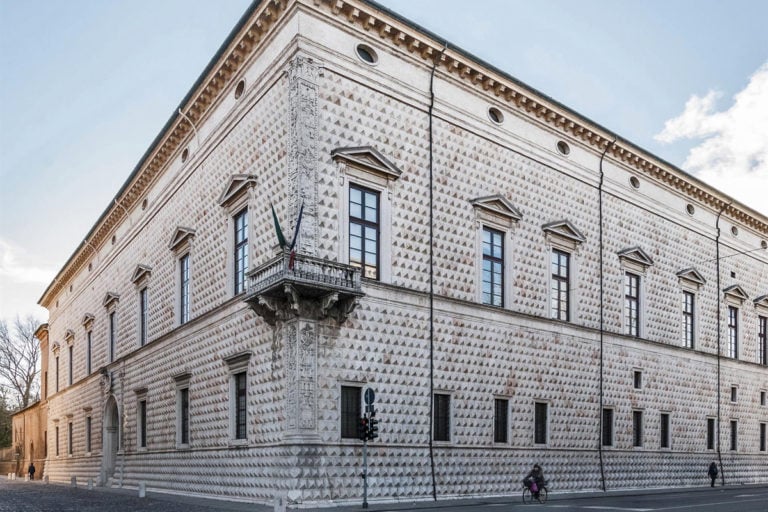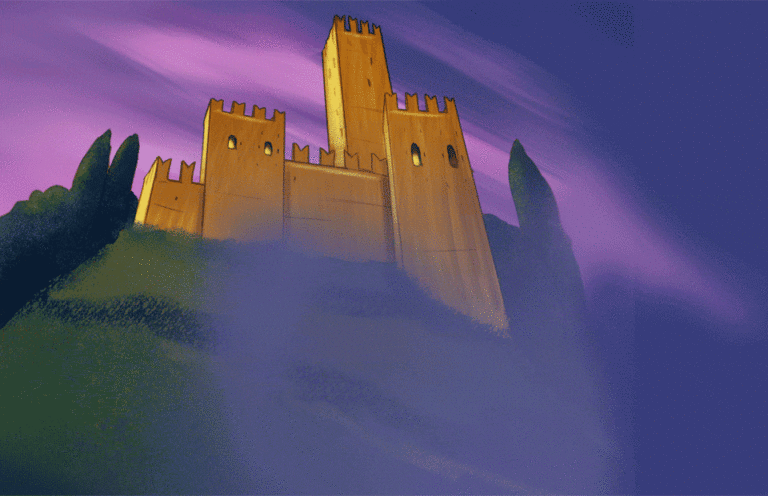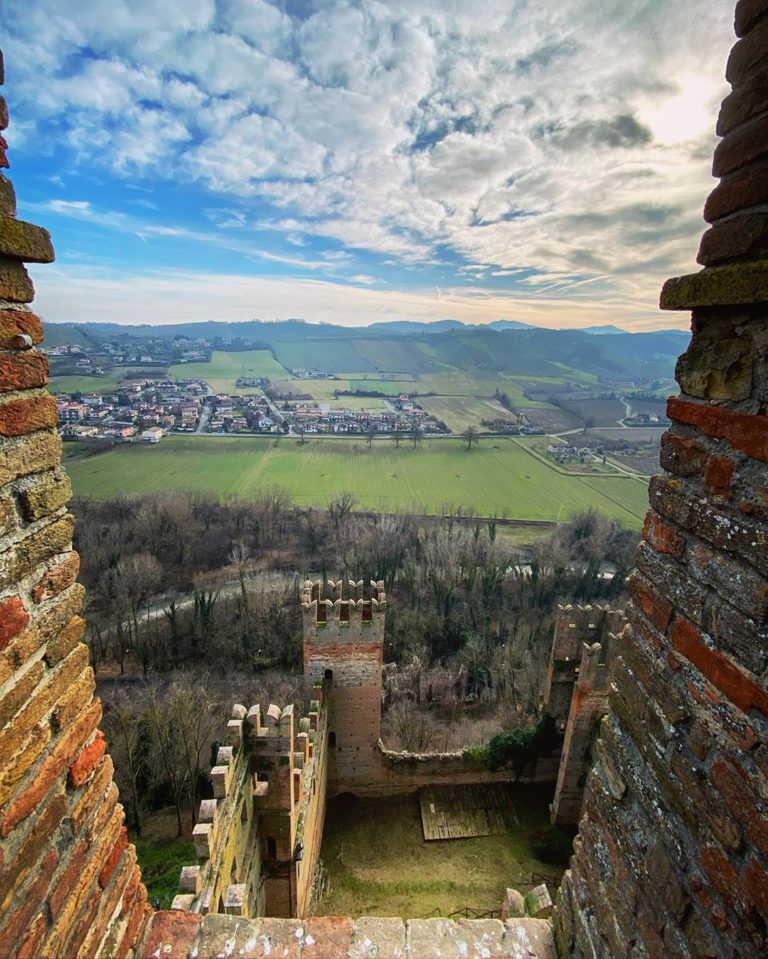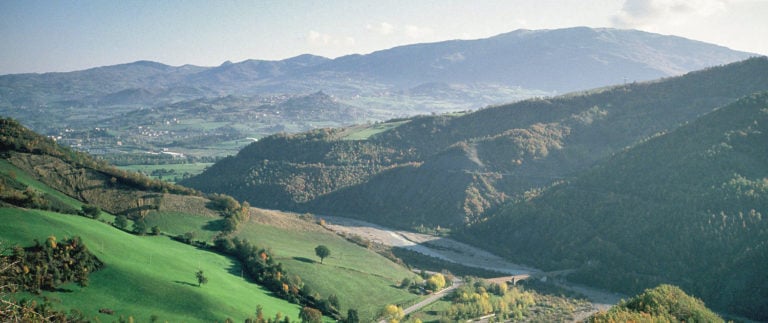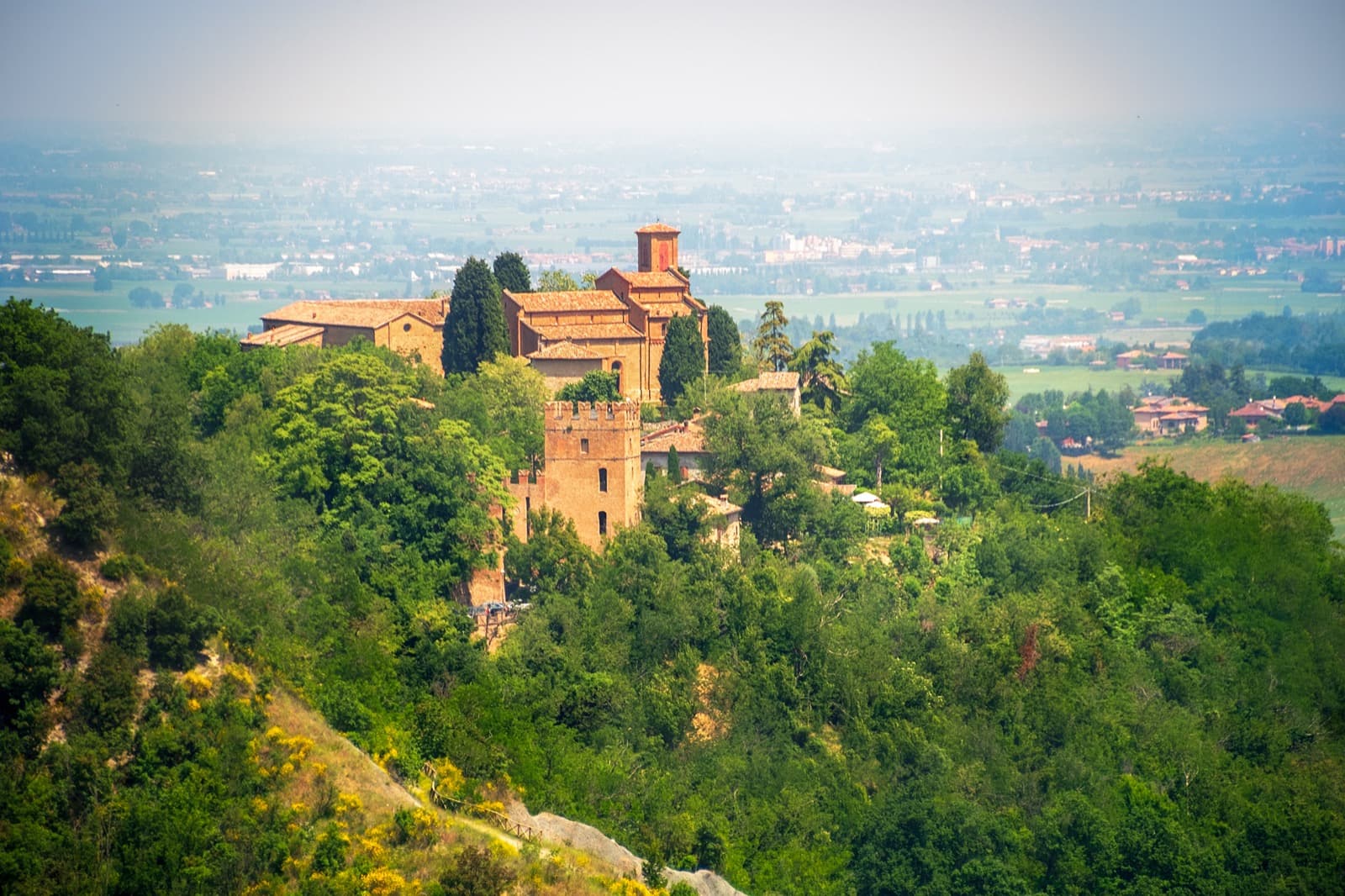Traveling around Italy, we come across elements of rare beauty – some the fruit of human ingenuity, others directly from nature – that make our country one of the most fascinating and evocative in the world.
Italy, with its millenary history, is rich in treasures, some of which are often not even imagined. As well as the most famous monuments, there are lesser-known details that can reveal the authentic beauty of our country.
Staircases, for example, are one of them. Often considered as mere functional elements within buildings, they can be true architectural masterpieces, capable of capturing the imagination and offering unique visual experiences.
In Emilia-Romagna, you can find unique examples, in some cases adorned with statues and frescoes, that will leave you speechless and literally dizzy.
Barozzi Palace (Vignola, MO)
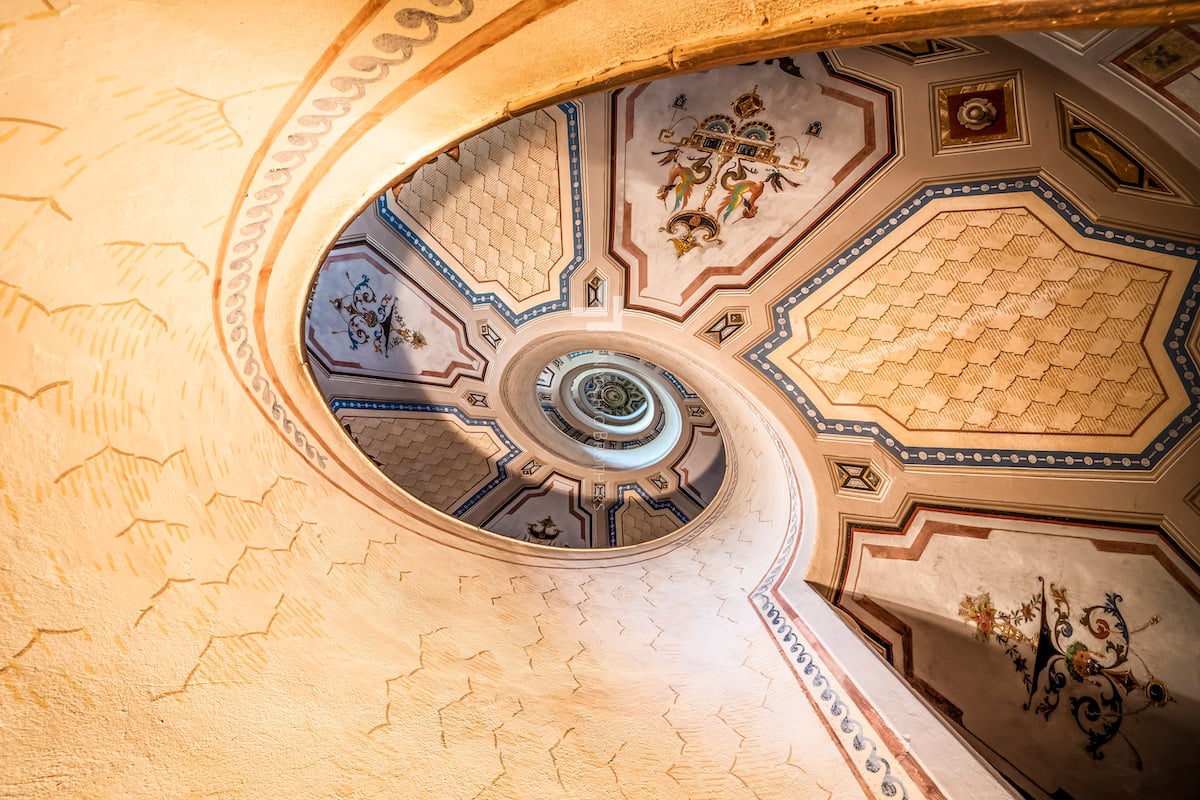
Where: Palazzo Barozzi, Piazza dei Contrari, 3 – Vignola (MO)
Info: open on weekends
In Vignola, a pretty village in the foothills of Modena, there is a scenic spiral staircase in the beautiful Palazzo Barozzi (or Palazzo Boncompagni Ludovisi) that is worth a visit in itself.
Palazzo Barozzi is a Renaissance complex, almost completely intact, built around 1560 on the orders of Ercole Contrari il Vecchio (feudal lord of Vignola) to a design by the great architect Jacopo Barozzi, known as il Vignola.
Its staircase is the first self-supporting helical structure in the world. It is supported by a column in the basement and by the elegantly frescoed perimeter wall.
No fewer than 106 “interlocking” steps connect the four floors of the palace, from the kitchens to the staterooms. Spiral effect guaranteed!
Boncompagni Palace (Bologna)
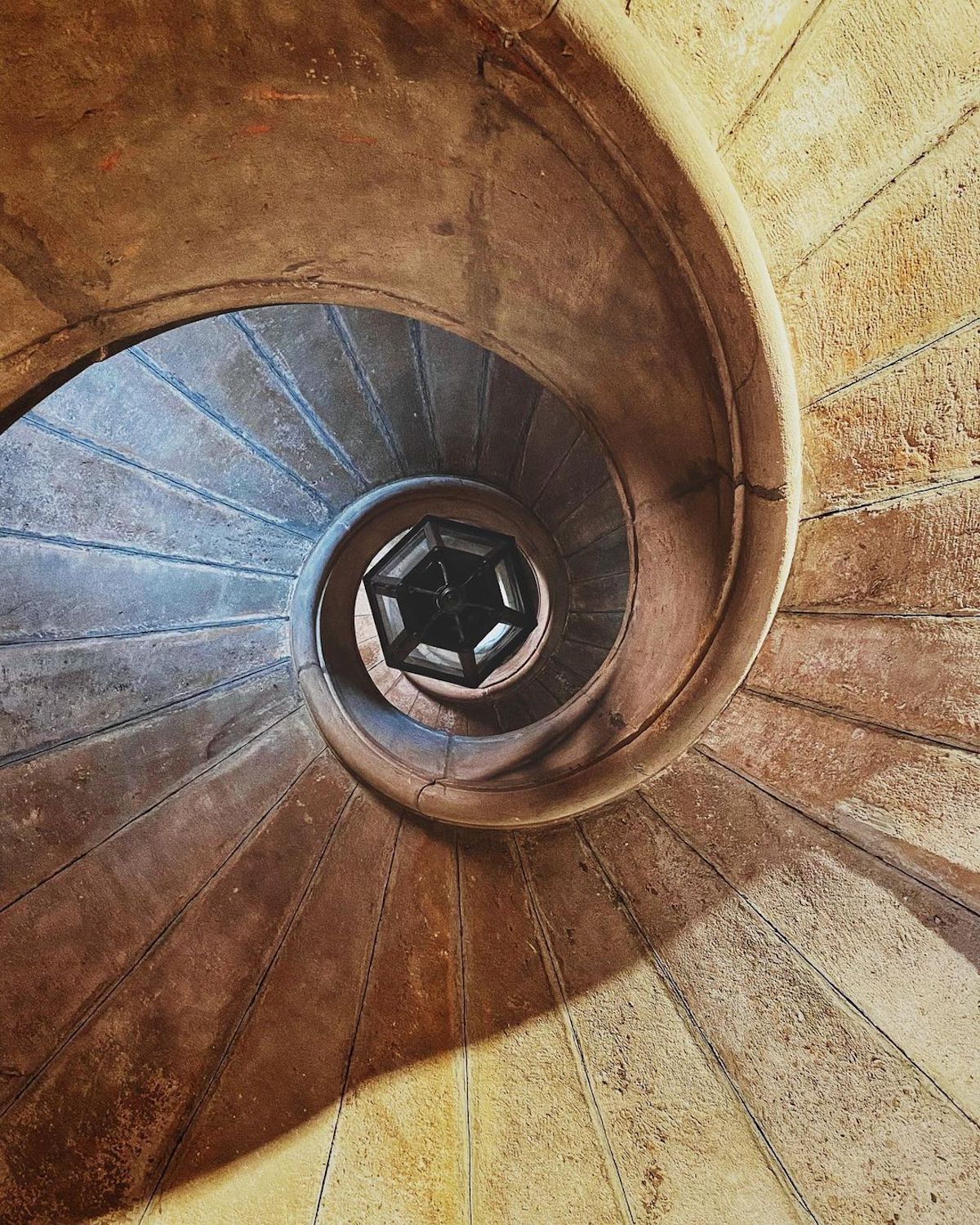
Where: Palazzo Boncompagni, Via del Monte, 8 – Bologna (BO)
Info: opening hours
A second spiral staircase can be found in Palazzo Boncompagni in Bologna, a few hundred meters from Piazza Maggiore and the Two Towers.
Like the previous one, it was designed by Jacopo Barozzi, who was so famous at the time that he was appointed Chief Architect of St Peter’s in the Vatican after Michelangelo’s death.
Inspired by the noble models of Bramante in the Vatican and by the staircase of Palazzo Farnese in Caprarola (Viterbo) designed by Jacopo Barozzi himself, this structure is very similar to the one of Palazzo Barozzi in Vignola.
On the wall of the spiral staircase, a mother-of-pearl marbling has recently been discovered, which resembles the inside of a shell, a recurring motif throughout the palace.
It is striking to think that this staircase was trodden by, among others, Pope Gregory XIII, who lived here.
Isolani Palace (Bologna)
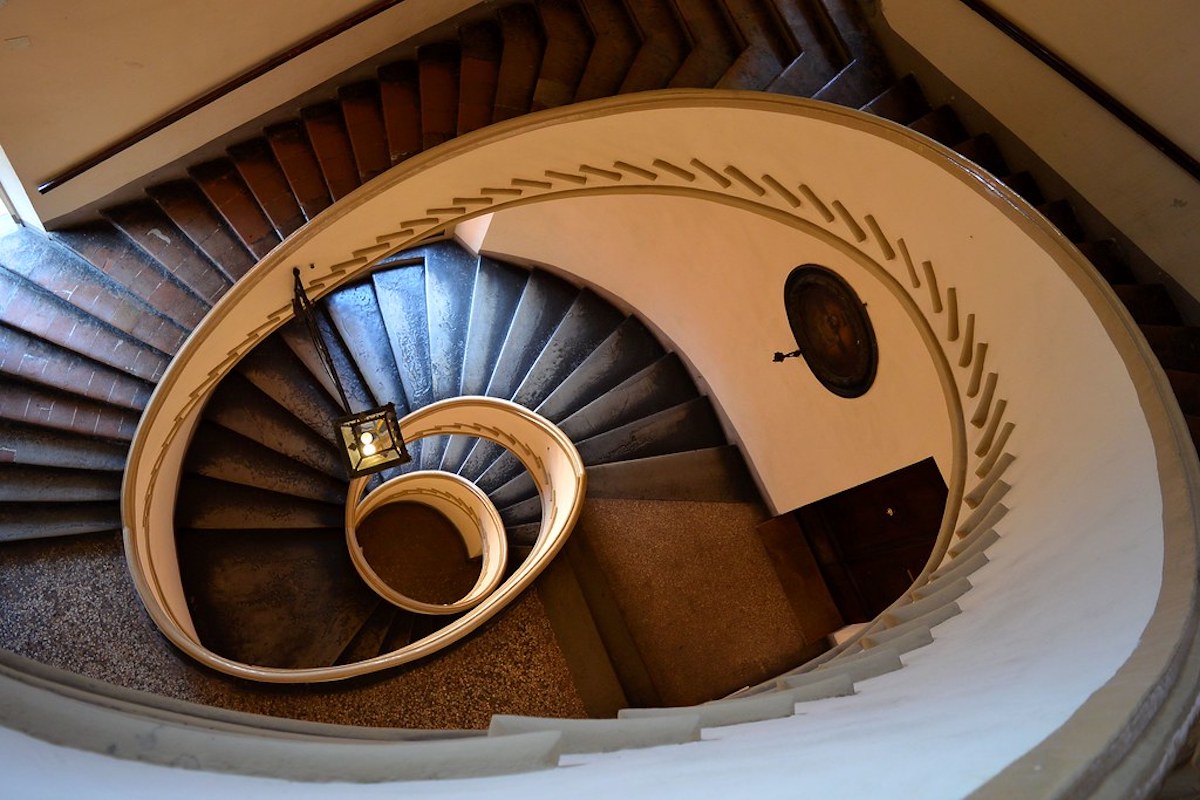
Where: Palazzo Isolani, Piazza Santo Stefano – Bologna (BO)
Info: opening hours
In the heart of Bologna’s historic center, overlooking the famous Piazza Santo Stefano, Palazzo Isolani houses another spiral staircase built by Jacopo Barozzi.
Although it has been rebuilt, it has retained its undeniable charm over the centuries, including a small window from which you can enjoy an unprecedented view of Bologna’s two towers.
The building – private – is mainly used for private and corporate events. Its staircase is therefore only visible during occasional openings to the public.
If you happen to be strolling under its porticoes, do not miss the opportunity to sneak inside, if the door is open, to take a quick look at this beautiful architectural feature.
Specola Museum (Bologna)
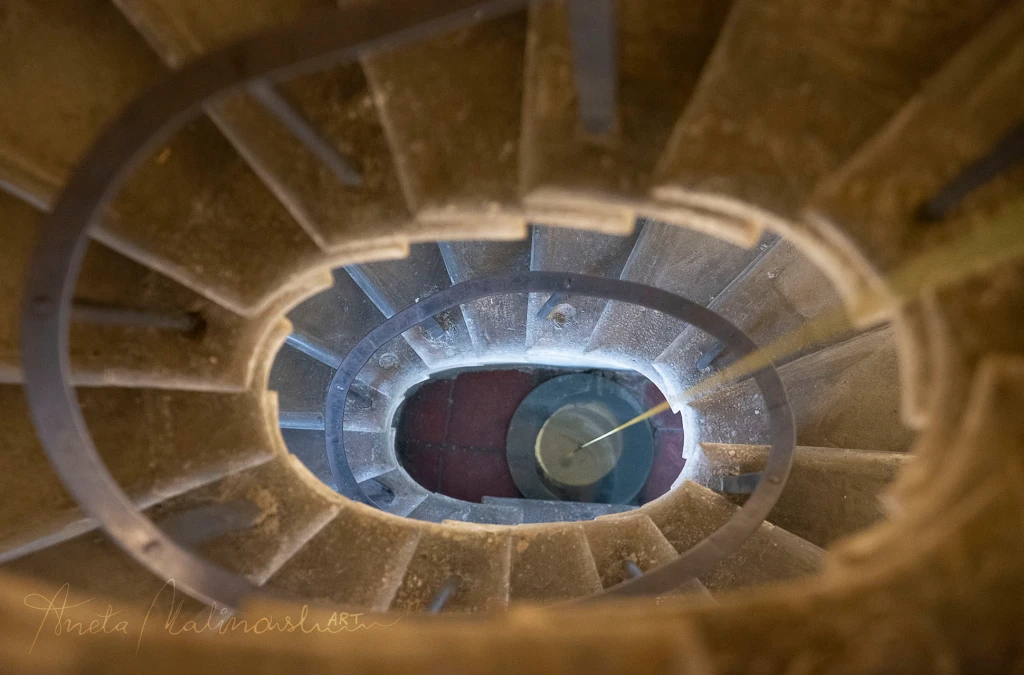
Where: Museo della Specola, Via Zamboni, 33 – Bologna BO
Info: opening hours
The Specola Museum, located in Palazzo Poggi in Bologna, not only houses many ancient instruments used by astronomers to study the sky and learn its secrets, but also offers visitors the enchantment of a beautiful spiral staircase in its Astronomical Tower.
Begun in 1712 to a design by Antonio Torri and completed in 1725 by Carlo Francesco Dotti, it became one of the most important astronomical observatories in Europe.
The staircase, made up of no less than 272 steps, gets narrower and narrower as you go up.
At the top, you will see a Foucault pendulum and an exceptional 360° view of the entire city.
Malvasia Palace (Bologna)
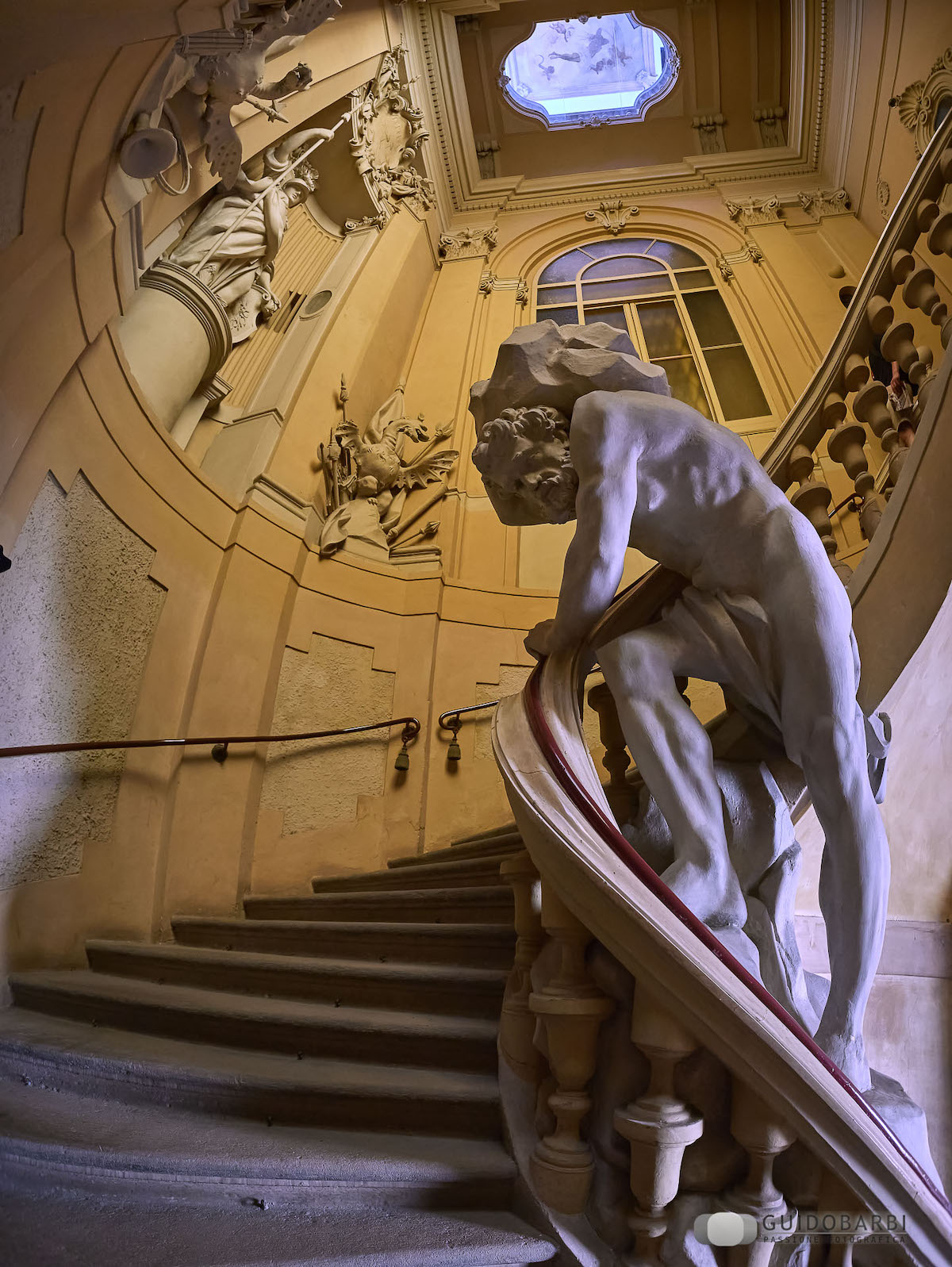
Dove: Palazzo Malvasia, Strada Maggiore, 22 – Bologna BO
Informazioni: The staircase is one of the places included in the tourist itinerary “Scaloni e Scale delle Meraviglie” organized by Bologna Welcome.
In Bologna, an elegant spiral staircase by Gian Carlo Sicinio Bibiena (around 1750) can be admired in the prestigious Palazzo Malvasia, built along one of the city’s oldest streets, the Via Emilia.
The structure is decorated with stucco statues of Sisyphus and Minerva by Filippo Scandellari.
Farnese Tower (Castell’Arquato, PC)
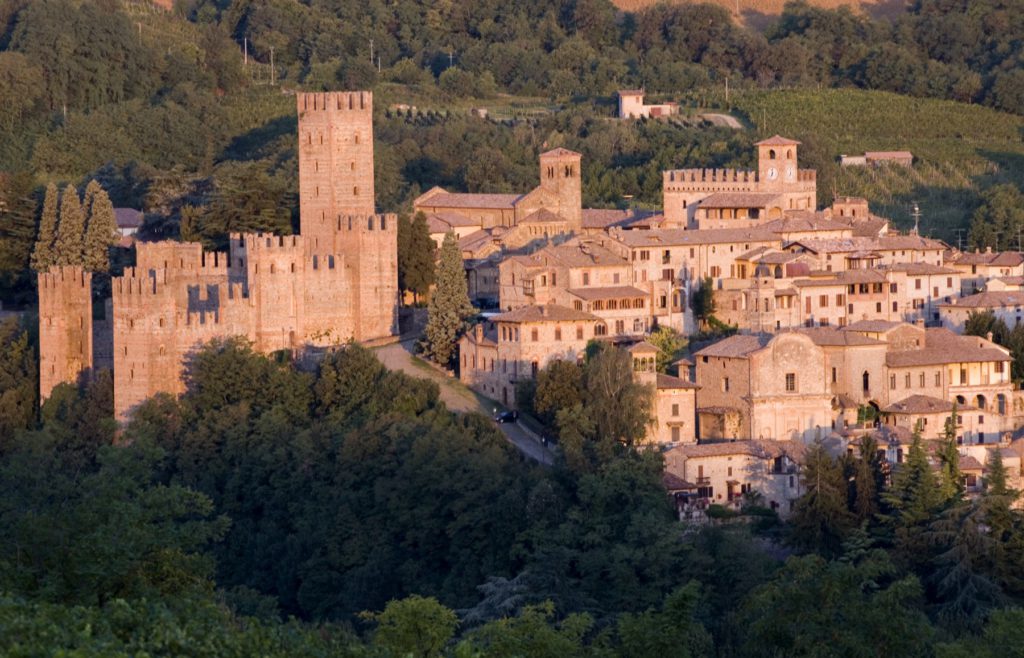
Where: Torrione Farnese, Via Fontane del Duca, 3 – Castell’Arquato (PC)
Info: Currently under concession to the Gens Innominabilis historical re-enactment society, it is open by appointment only.
One of the most beautiful villages/castles in Emilia-Romagna is undoubtedly Castell’Arquato, located on the foothills of the Val d’Arda.
If you think you have seen it somewhere before, you’re probably right: several film scenes were shot here, including the famous American film Ladyhawke.
Among the many things not to be missed during your visit is the Torrione Farnese, made up of five levels connected by a spectacular spiral staircase: a structure built under Sforza dinasty rule that recalls that recalls the architectural designs of Michelangelo and Vignola.
The Torrione is a 16th-century building located in the lower part of the village, used in the 20th century as the seat of the Geological Museum as well as an artist’s residence by the writer Aldo Braibanti (star of The Lord of the Ants).
Tower of Rivalta Castle (Gazzola, PC)
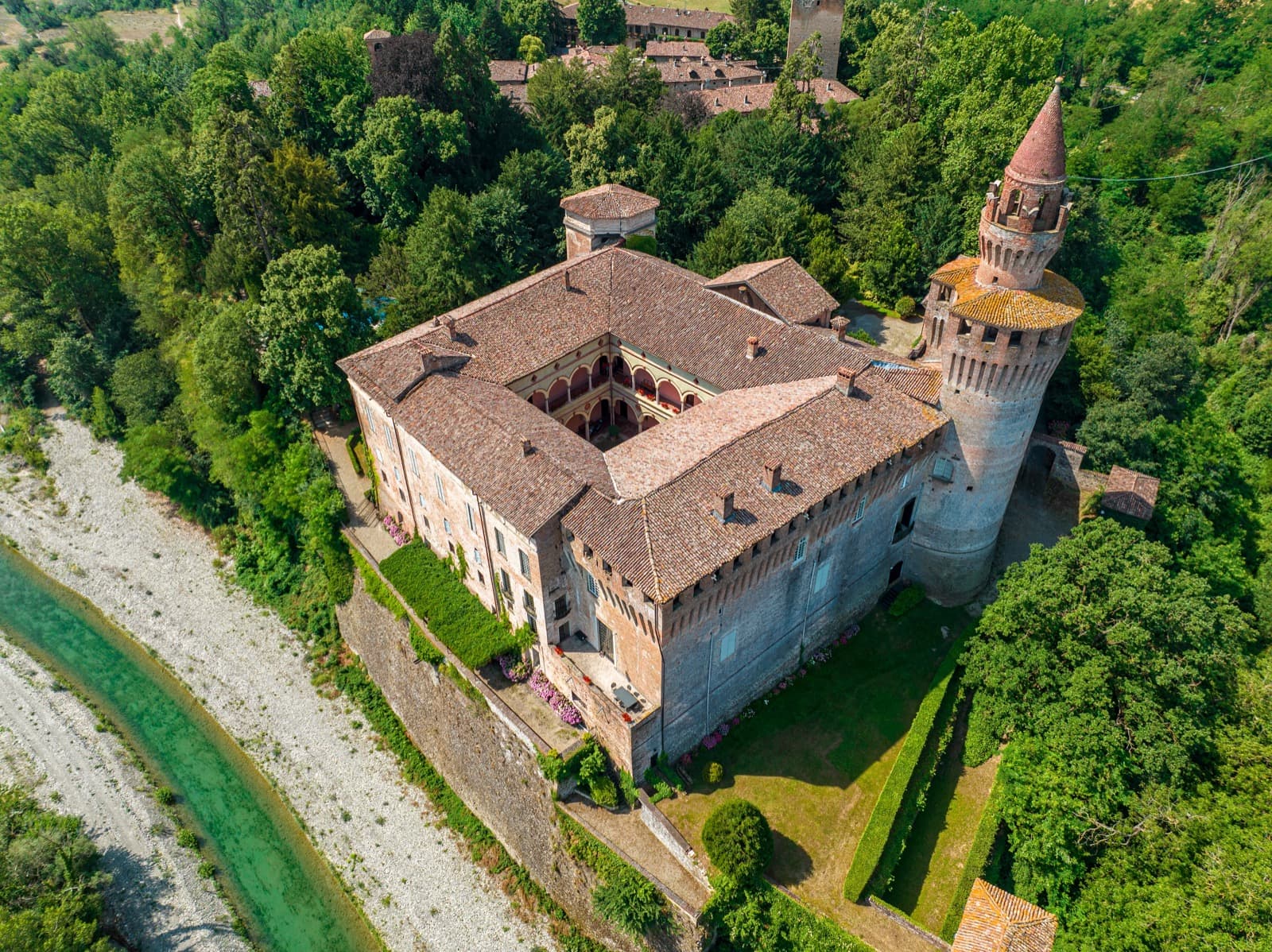
Where: Castello di Rivalta, Loc. Borgo Di Rivalta, 7 (SP 40) – Gazzola (PC)
Info: guided tours
Hidden among the green hills of Emilia-Romagna, Rivalta is one of the most characteristic villages in the province of Piacenza.
The town is an authentic open-air museum of art and architecture. The narrow streets are lined with charming, colorful houses, each with its own story to tell.
There are many places to visit, including the Madonna del Ponte Oratory and the medieval tower, as well as the medieval village and its castle, still inhabited by its noble owners, the Counts of Landi.
Inside the tower, which can be seen from afar, it is possible to book a guided tour and climb the staircase (which is quite steep and narrow) that ends with a 360° view of the Trebbia River.
Carducci House (Bologna)
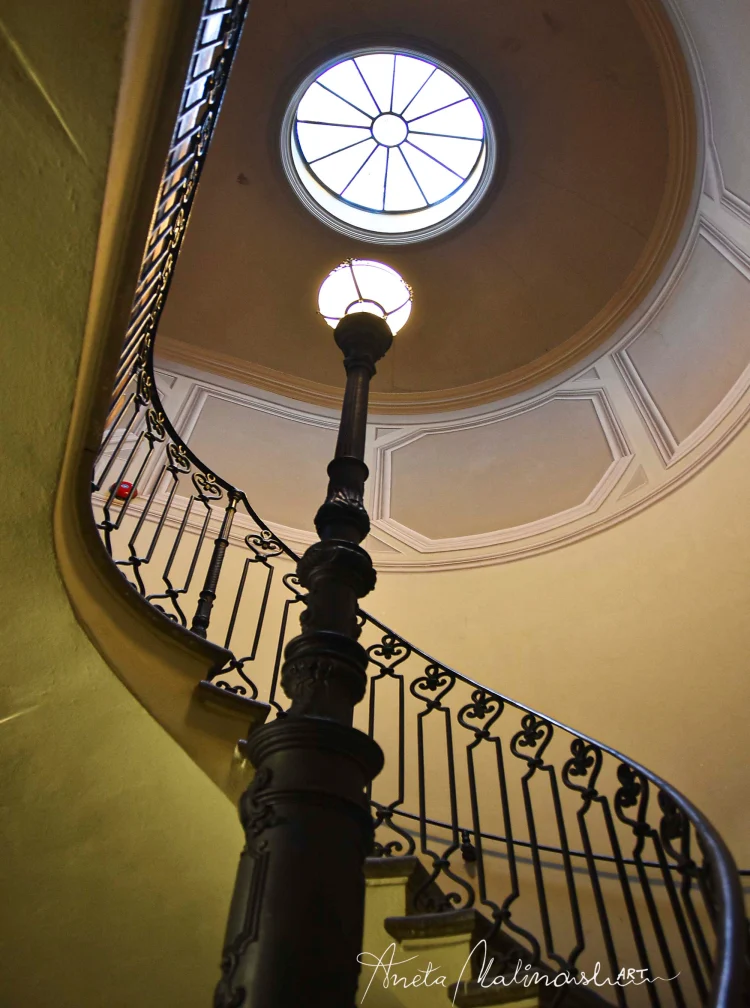
Where: Casa Carducci, Piazza Giosuè Carducci, 5 – Bologna (BO)
Info: opening hours
One of Bologna’s hidden gems is the Carducci House Museum. This picturesque house offers visitors a unique opportunity to immerse themselves in the life and work of the famous poet Giosuè Carducci, winner of the Nobel Prize for Literature in 1906.
Built in the 18th century, the house was the writer’s home from 1890 until his death in 1907. Inside, a beautiful spiral staircase leads to the nine rooms that make up the museum.
Pretorio Palace (Castrocaro Terme e Terra del Sole, FC)
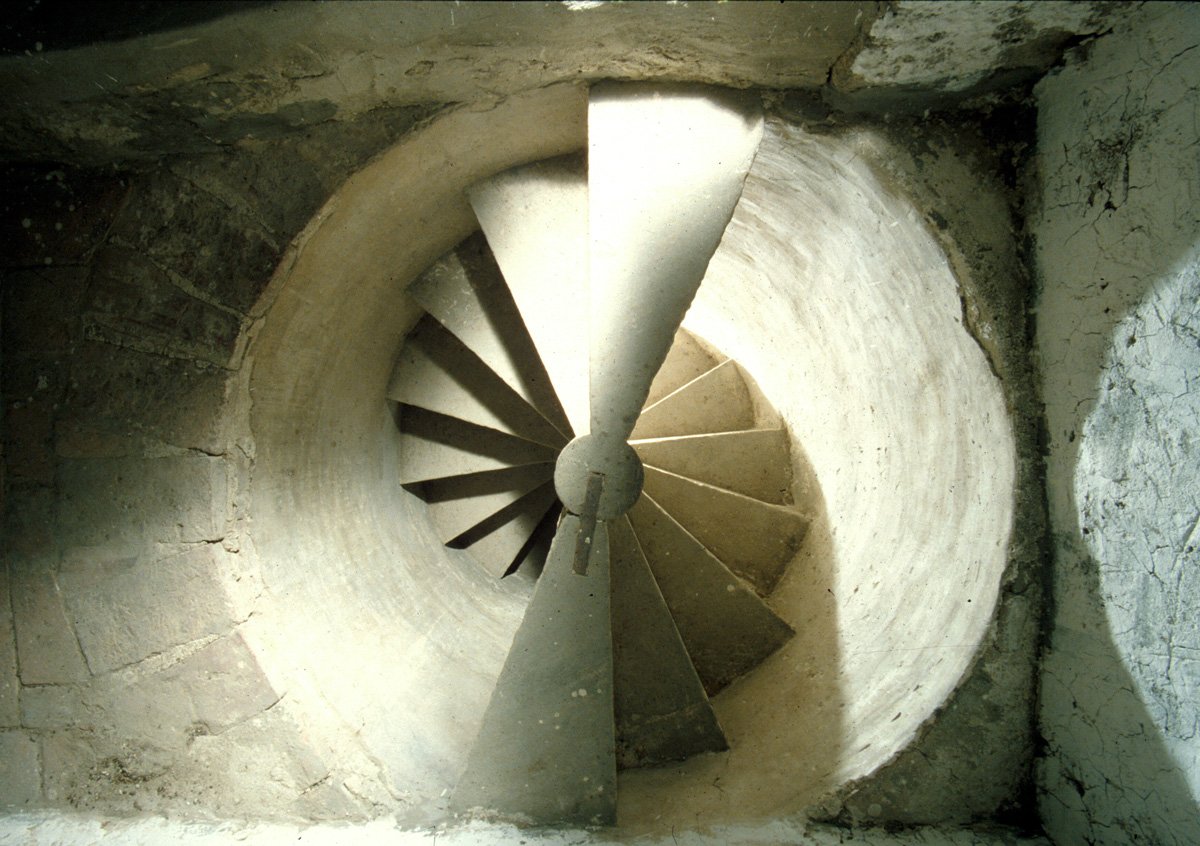
Where: Palazzo Pretorio, Via Vittorio Veneto, 3 – Terra del Sole (FC)
Info: House of the Museum of Man and the Environment, open by appointment only
The ideal town of Terra del Sole, in the province of Forlì/Cesena, can offer a pleasant surprise to those who visit it.
Inside the Renaissance Palazzo Pretorio there is a beautiful double spiral staircase, developed on a single central pivot and realised in the form of a spiral staircase.
This architectural element is very striking, especially from a distribution point of view, for the function it plays in the context of the secret paths inside the building. Moreover, the structure seems to correspond exactly to a sketch made by Leonardo da Vinci a century before the city was built.
Albergati Palace (Zola Predosa, BO)
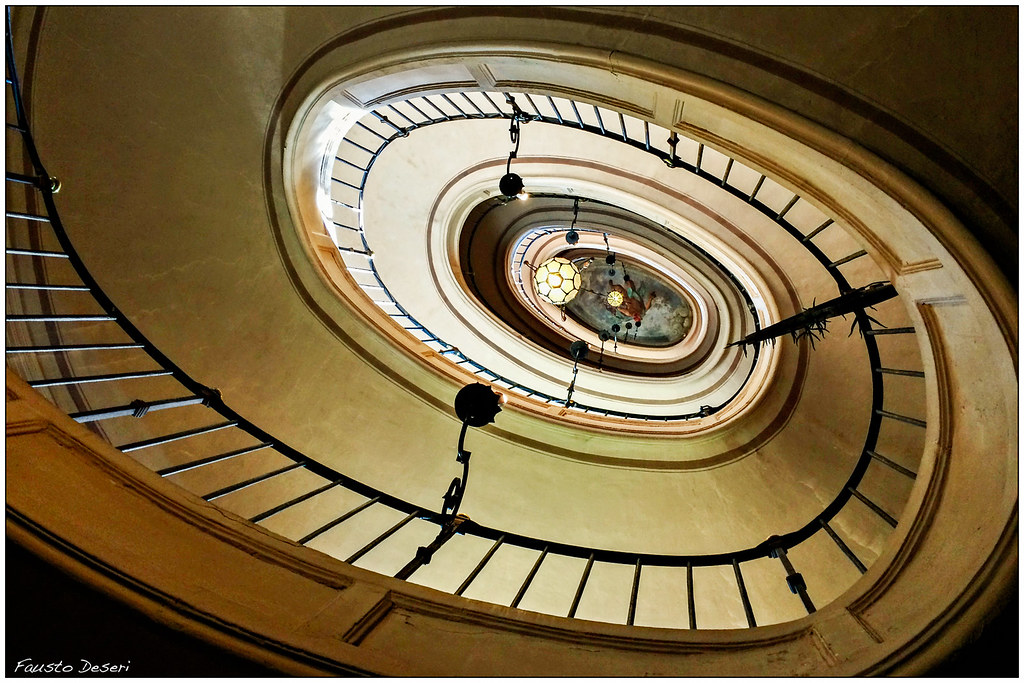
Where: Palazzo Albergati, Via A. Masini, 46 – Zola Predosa (BO)
Info: the palace occasionally opens its doors for cultural initiatives and events
Palazzo Albergati is a grand country residence, privately owned, that belonged to the Albergati family from Bologna, one of the most illustrious and representative families in the area between the 16th and 17th centuries.
Several staircases were built to connect the different floors of this extraordinarily large building, sober on the outside and baroque on the inside, the most notable of which is the noble staircase with three spiral flights.
Author
You may also like
Discover Emilia Romagna from above – On top of Towers and Bell towers
by Elisa Mazzini /// October 24, 2018
Italian greatest artists: 9 artworks in Emilia-Romagna
by Celestina Paglia /// February 12, 2021
The ‘Ideal Cities’ in Emilia Romagna
by Davide Marino /// November 21, 2019

Interested in our newsletter?
Every first of the month, an email (in Italian) with selected contents and upcoming events.
Castles with ghosts in Italy – a thrilling experience in Emilia Romagna
by Elisa Mazzini /// October 22, 2020
Castell’Arquato: the Middle Ages amid the vineyards
by Elisa Mazzini /// July 6, 2017
Dolce Vita in Valmarecchia: an itinerary among hamlets and hills
by Elisa Mazzini /// June 7, 2016
